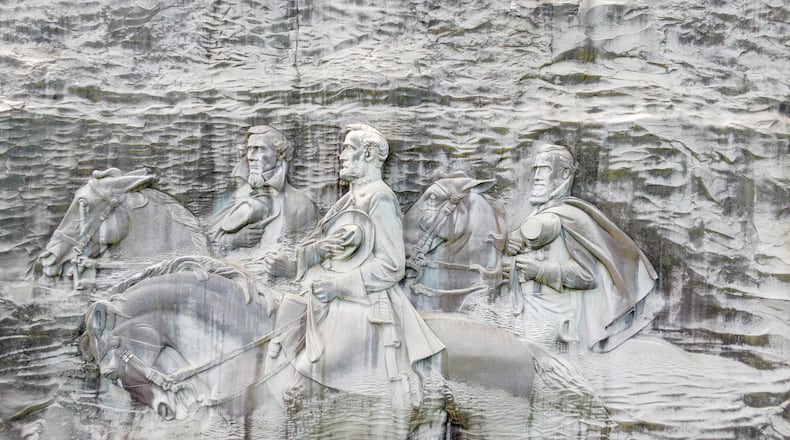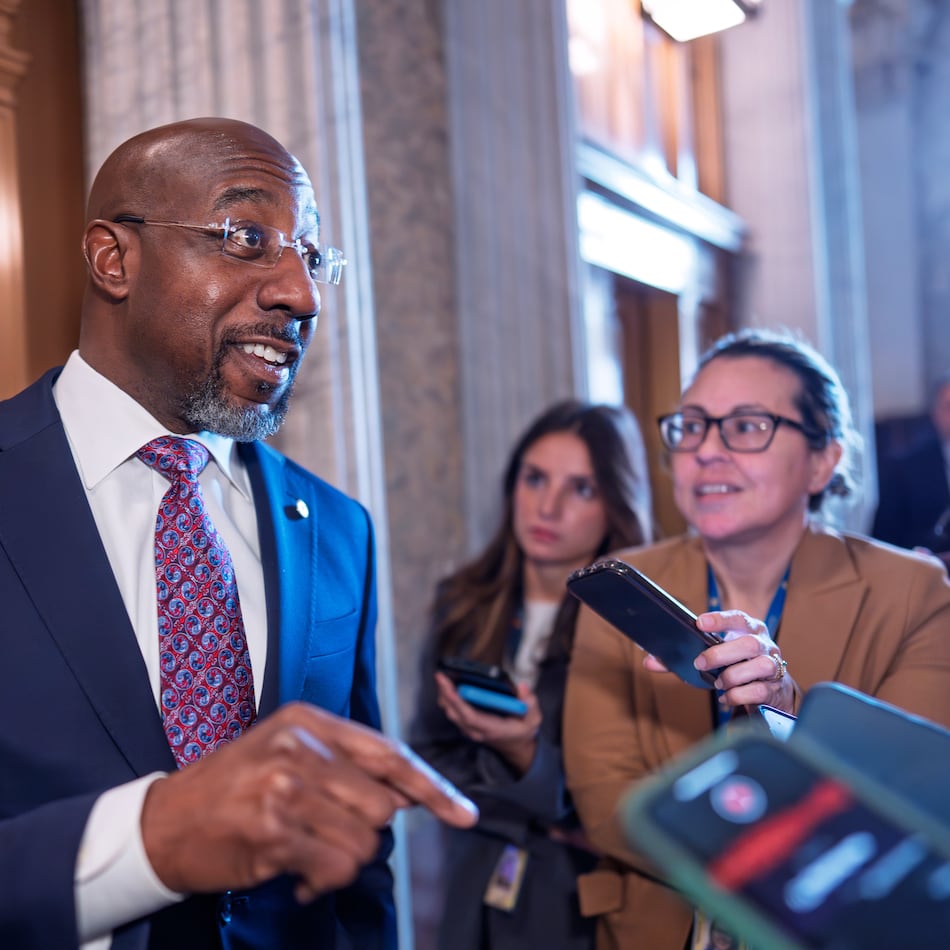The Stone Mountain carving is the largest Confederate monument in the world.
Its history is complex and not widely known. The twists and turns of the story to create this Confederate monument — a carving on an ancient rock commemorating the side that lost a 4-year Civil War to preserve slavery — mirrors the larger history of the state of Georgia and the United States.
Monuments do not necessarily represent the history of the people or events memorialized. Often, these monuments can teach us more about the people who erected them — and our response to them in our own time can teach us much about ourselves.
Credit: contributed
Credit: contributed
In Atlanta History Center’s new documentary “Monument: The Untold Story of Stone Mountain”, we explore this history and hear from people who have been affected by it.
The carving effort originated just before the rebirth of the Ku Klux Klan atop privately-owned Stone Mountain in 1915. Klan members were deeply connected to this nationally popular effort, which painted the Confederacy as a noble, albeit lost, cause. This worldview made much of “state rights” and little to nothing of slavery as the cause of the Civil War. It ignored the emancipation of 4 million Southerners (40% of the Southern population) and saving the United States as the nation we know today.
This initial carving effort came to naught due to ballooning budgets and the onset of the Great Depression. For the next three decades, the carving remained with just Robert E. Lee and the faintest outlines of the other two figures and their horses. That is, until the monument found its champion in segregationist gubernatorial candidate Marvin Griffin, who made a 1954 campaign promise to have the state of Georgia buy the mountain and restart the effort to create a Confederate memorial.
That promise was made only 57 days after the landmark ruling in Brown vs. Board of Education and the start of what historians call the Massive Resistance movement to federally mandated integration. The state of Georgia bought the land in 1958, restarted the carving in 1964 and finally completed it in 1972 — for context, in 1972, “The Godfather” was released and my favorite TV show was “M*A*S*H”.
Today, 51 years after the completion of the carving, we’re grappling with what it means and what should be done with it.
The Confederate monument issue is indicative of broader issues in our society. While the history of the Confederacy and the Civil War is certainly important to this discussion, what the Stone Mountain carving really represents is how Confederate symbolism was used and what that usage says about the United States during the two eras of the monument’s construction.
Massive Resistance to racial integration is not ancient history. In my living memory as a lifelong Georgian, Confederate symbolism was used to represent resistance to living alongside, marrying, going to school with, working with and sharing political power with people who had different skin colors. As Georgians and Americans, segregationist values are not what we embrace today, but current Georgia state law dating back to that time period defines the entire park as a Confederate memorial.
Not only is it defined as such, but a 2001 state law protects the carving with language pulled right out of the old Confederate “Lost Cause” ideology. This has the effect of keeping the Stone Mountain carving as an object of state-endorsed veneration, rather than an artifact of Marvin Griffin’s segregationist legacy.
There are others taking steps to address the true history of the carving. The Stone Mountain Memorial Association, the entity charged with governing the park and maintaining it as a Confederate memorial, hired an experienced exhibition firm to redo the museum exhibits overlooking the carving. The SMMA has stated that it is committed to telling the full history.
The next question, though, is what to do once that history becomes well-known; that is where the democratic process comes in.
There are more options than either keeping the monument and its status as a state designated memorial exactly as-is or blasting the carving off the side of the mountain. I do not think advocating for policy solutions will be productive at this stage. It’s clear that we, as Georgians, are not yet working from the same set of facts. Perhaps this process of learning and building factual consensus around a singular, though highly charged, monument can help us build the muscle to tackle the really big issues that confront our state in a way that allows citizens to express their views while listening, really listening, to the views of their fellow citizens.
Visiting the park today, I see people from all different backgrounds who are using it. This is likely not what Marvin Griffin and his fellow segregationists had in mind when the state purchased the park and designated it as a Confederate memorial. You can hear directly from Governor Griffin in the documentary describing the type of Georgia he wanted to preserve.
The history is clear — and Atlanta History Center will continue to make it available. It’s now up to all of us Georgians and our state representatives to take the baton. It will take courage, but we can take on this issue with wisdom, justice and moderation.
F. Sheffield Hale is president and CEO of the Atlanta History Center.
About the Author
Keep Reading
The Latest
Featured



